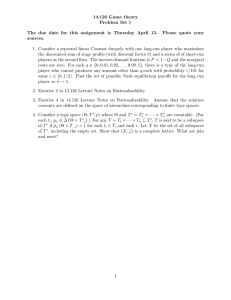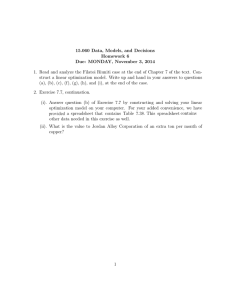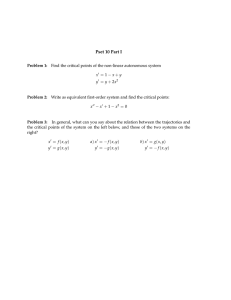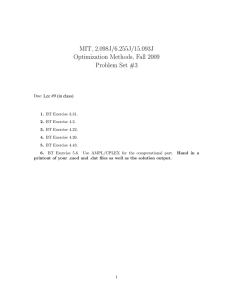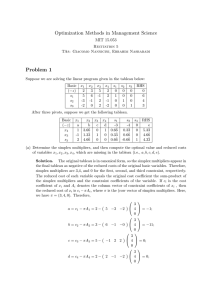Optimization Methods in Management Science Problem 1 MIT 15.053
advertisement
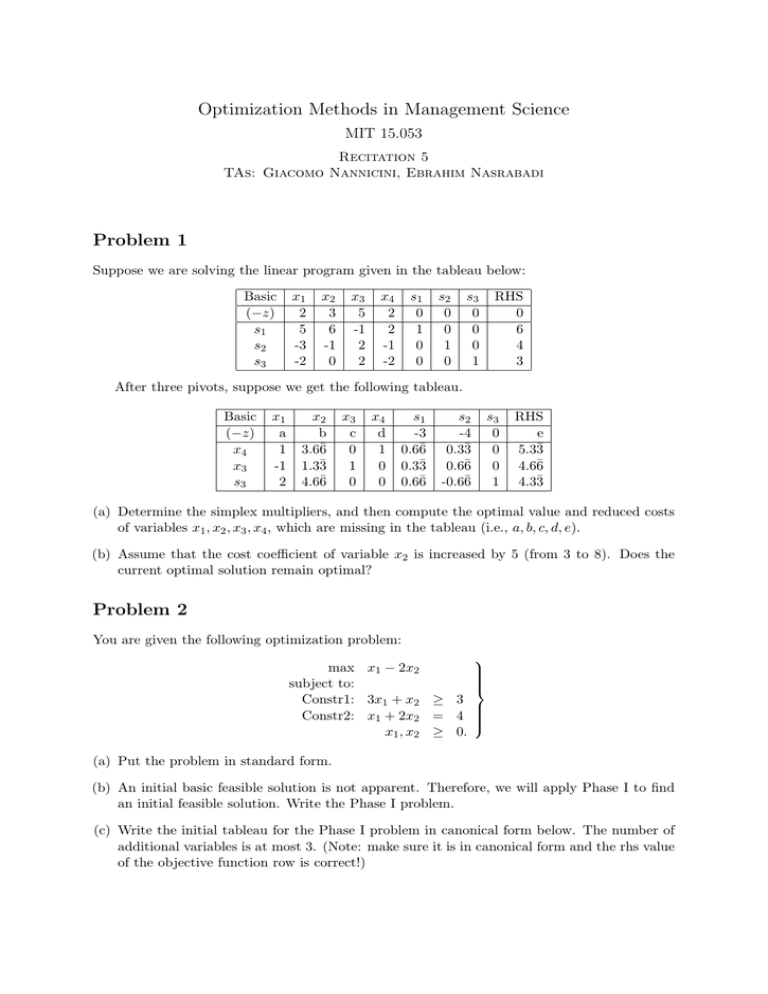
Optimization Methods in Management Science MIT 15.053 Recitation 5 TAs: Giacomo Nannicini, Ebrahim Nasrabadi Problem 1 Suppose we are solving the linear program given in the tableau below: Basic (−z) s1 s2 s3 x1 2 5 -3 -2 x2 3 6 -1 0 x3 5 -1 2 2 x4 2 2 -1 -2 s1 0 1 0 0 s2 0 0 1 0 s3 0 0 0 1 RHS 0 6 4 3 After three pivots, suppose we get the following tableau. Basic (−z) x4 x3 s3 x1 a 1 -1 2 x2 b 3.66̄ 1.33̄ 4.66̄ x3 c 0 1 0 x4 d 1 0 0 s1 -3 0.66̄ 0.33̄ 0.66̄ s2 -4 0.33̄ 0.66̄ -0.66̄ s3 0 0 0 1 RHS e 5.33̄ 4.66̄ 4.33̄ (a) Determine the simplex multipliers, and then compute the optimal value and reduced costs of variables x1 , x2 , x3 , x4 , which are missing in the tableau (i.e., a, b, c, d, e). (b) Assume that the cost coefficient of variable x2 is increased by 5 (from 3 to 8). Does the current optimal solution remain optimal? Problem 2 You are given the following optimization problem: ⎫ max x1 − 2x2 ⎪ ⎪ ⎪ ⎪ subject to: ⎬ Constr1: 3x1 + x2 ≥ 3 ⎪ Constr2: x1 + 2x2 = 4 ⎪ ⎪ ⎪ ⎭ x1 , x2 ≥ 0. (a) Put the problem in standard form. (b) An initial basic feasible solution is not apparent. Therefore, we will apply Phase I to find an initial feasible solution. Write the Phase I problem. (c) Write the initial tableau for the Phase I problem in canonical form below. The number of additional variables is at most 3. (Note: make sure it is in canonical form and the rhs value of the objective function row is correct!) Problem 3 Consider the following 2-person zero-sum game: R1 R2 R3 C2 3 1 -3 C1 2 3 -3 C3 -2 0 3 (a) Write a linear program to determine an optimal strategy for the row player. Do not solve the linear program. (b) Write a linear program to determine an optimal strategy for the column player. Do not solve the linear program. Problem 4 Two players, say Player I and Player II, simultaneously call out one of the numbers one or two. Player Is name is Odd; he wins if the sum of the numbers is odd. Player IIs name is Even; she wins if the sum of the numbers is even. The amount paid to the winner by the loser is always the sum of the numbers in dollars. It turns out that one of the players has a distinct advantage in this game. Can you tell which one it is? 2 MIT OpenCourseWare http://ocw.mit.edu 15.053 Optimization Methods in Management Science Spring 2013 For information about citing these materials or our Terms of Use, visit: http://ocw.mit.edu/terms.
